Osteoarthritis of the shoulder joint is accompanied by swelling, severe pain in the shoulder, limited mobility. The causes and symptoms of the disease, available treatments and ways to help at home will be discussed later in the article.
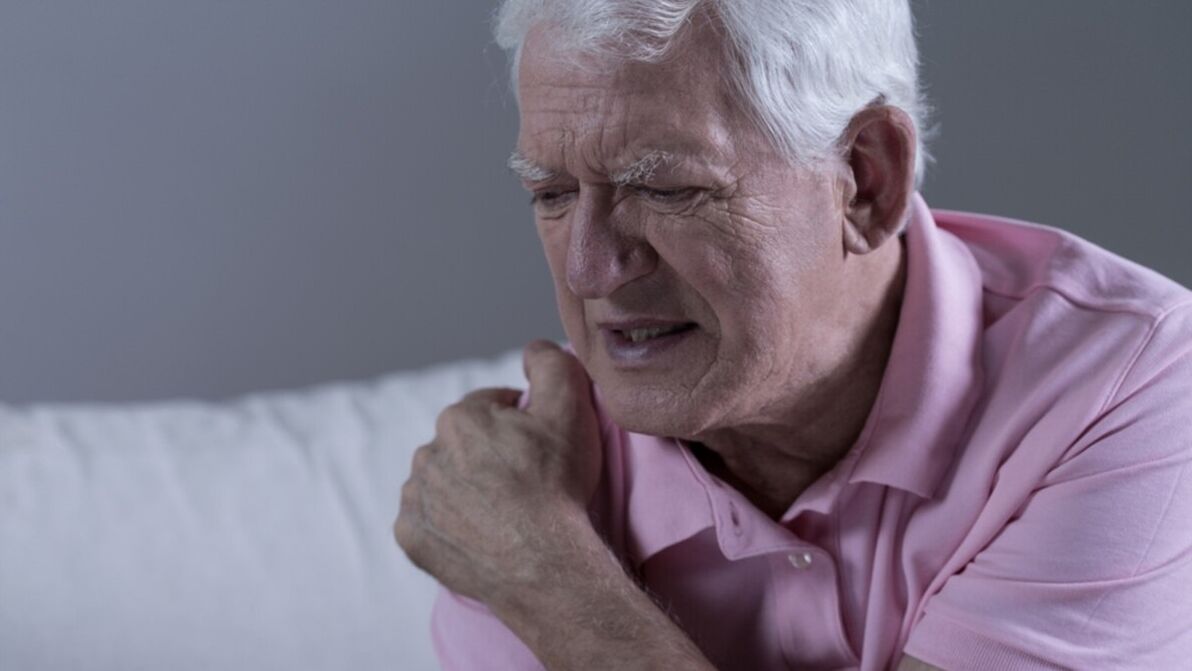
What is shoulder arthritis?
The shoulder joint is structurally very complex and is the most mobile, providing the human body with the most complete range of motion. The shoulder joint capsule is able to stretch so strongly that a person can lift his arm vertically and rotate with it. This action weakens the ligaments and often results in mild ischemia as a result of the sharp bending of the tendons.
It is the malnutrition of articular tissue that poses the main danger of its destruction and promotes the development of pathology.
The disease, which is primarily characterized by degeneration of the tissues of the shoulder joint, is called arthrosis of the shoulder joint or shoulder arthrosis. Shoulder biomechanics is based on the perfect functioning of all components: normal nerve conduction, good blood supply, flawless anatomical structure. Violation of any of these conditions always leads to the deformation of internal tissues, anxiety, restricted movement, pain.
Osteoarthritis (or osteoarthritis) is primarily a degenerative disease, not an inflammatory one. It is associated with ischemic processes in the surrounding tissues for various reasons.
As a result, the nutrition of the joint is impaired, so the thin and elastic layer of hyaline cartilage covering the head of the bone becomes thinner. Less elastic and thinner hyaline cartilage makes it difficult to move normally, leading to narrowing of the joint space.
This phenomenon causes the body to move, and bone protrusions called osteophytes form at the edges of the joint. It is osteophytes that damage muscles and ligaments with sharp edges, causing chronic slow inflammation.
The main danger of osteoarthritis is that a slight restriction of hand mobility constantly leads to a decrease in range of motion.
Without movement, the shoulder begins to suffer from the accumulation of salts in the tissues surrounding the joint, the deterioration of nutrition of the joint tissues. Over time, this is fraught with the formation of joint contractures - limiting mobility or complete loss of shoulder mobility and the patient's disability.
Causes of shoulder osteoarthritis
The only cause of shoulder arthrosis is deep ischemia, ie a sharp or gradual deterioration of the blood supply to certain areas of the tissues and the depletion of joint nutrition. However, this is due to factors that may be present in the anamnesis alone or simultaneously:
- Shoulder injury. These can be obvious injuries from a car accident or a fall, as well as hidden tears from muscles and ligaments obtained during exercise or hard work. Any joint injury always has the ability to remind itself, because the affected areas are not restored to full size, and their permeability is constantly impaired. Within a few years or decades, the body can cope successfully until the onset of aging.
- Age-related changes in the body.
- Infectious attacks that cause arthritis.
- Metabolic and hormonal disorders are also often associated with age.
- Hereditary or genetic predisposition.
Stages and symptoms of osteoarthritis of the shoulder joint
In its development, the disease goes through several stages. Because osteoarthritis is a very slow-growing chronic disease, the first stage in which joint deformity can be most effectively treated is overlooked by most patients.
- Symptoms of the first stage. For the first time, the patient may already feel some discomfort when moving his hand with the thinning of the hyaline cartilage. A sharp sway or jump is not accompanied by pain, which is due to the absence of nerve endings in the cartilage and its destruction does not cause pain. But sometimes in the evening or at the end of training, shoulder pain begins to bother. They often do not pay attention to it, they associate it with muscle pain or neuralgia. And the disease has started and is almost asymptomatic, and if no urgent measures are taken, it goes to the second stage.
- Symptoms of the second stage. If the patient feels pain when moving his hand, accompanied by a clear audible click, it indicates the formation of osteophytes in the joint. From this point on, the shoulder is constantly damaged by the sharp edges of the bone protrusions, which cause inflammation of the surrounding tissues. It is expressed by pain with morning stiffness or normal physical exertion or evening fatigue, which disappears only after the development of the joint.
A person's well-being deteriorates because a chronic focus of inflammation in the body affects the general condition. At night, in humid weather, out of season, the joint may ache more strongly.
The patient severely limits the volume and amplitude of arm movements, and cannot lift it more than ninety degrees in both the frontal and lateral planes. This leads to muscle atrophy and significant deterioration of articular tissue nutrition.
- Symptoms of the third stage. Usually, if the patient comes to the doctor in the third stage of the disease, then he is practically unable to move his hand. The hand does not rise, does not pull to the side, the joint swells and grows. Muscle atrophy and pain syndrome are so severe that your fingers tremble as you try to raise your hand. In most cases, the presence of contractures in the shoulder joint, "frozen shoulder" syndrome is noted.
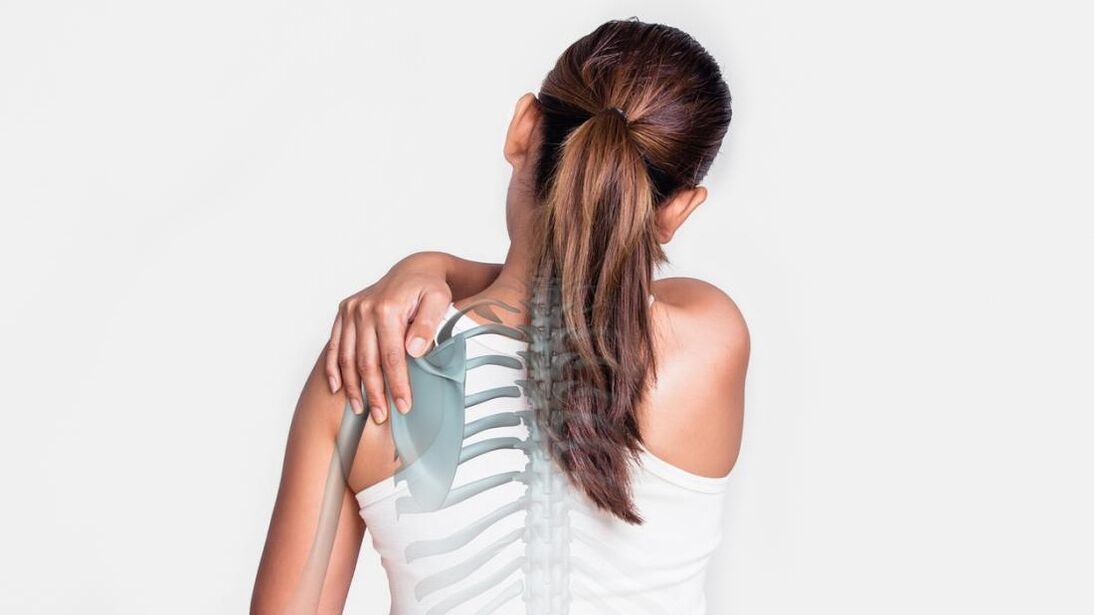
Ways to treat shoulder osteoarthritis
In fact, it is impossible to treat osteoarthritis, and even more so, it is impossible to do it at home. The disease is so dependent on many internal and external factors that it almost never causes a root cause.
But the good news for patients in the first and second stages of the disease is that the development of osteoarthritis can be stopped. Therefore, doctors insist on early diagnosis of the disease and the beginning of treatment of shoulder arthrosis, when the articular tissue is only partially destroyed, there are no osteophytes, and you can try to restore normal nutrition together.
Conservative therapy
Treatment of osteoarthritis always has two goals: to relieve pain and, if possible, to restore the supply of compounds necessary for normal functioning.

- Tissue uptake depends on what the patient eats. Diet for osteoarthritis should exclude salt and alcohol. Meat products and vegetables, which are purine bases that increase the content of uric acid in the body, are also undesirable. Steamed milk and vegetable dishes are recommended.
- Interaction of glucosamine and chondroitin, as well as drugs containing collagen that nourishes joint tissues. And regular use of gelatin in the form of jelly helps to enrich the menu with animal collagen.
- Topical application of various warming, anti-inflammatory and chondroitin ointments and balms activates blood circulation to the tissues surrounding the joint.
- If the pain syndrome is mild, the use of non-steroidal anti-inflammatory drugs is not recommended. If hand movements are accompanied by severe pain, NSAIDs can anesthetize and reduce inflammation. These medications can help relieve pain.
- If the shoulder is swollen and an inflammatory process begins inside, rubbing a compress or gel from the ointment prescribed at night has an excellent effect.
- Therapeutic gymnastics is an indispensable component of the successful treatment of shoulder osteoarthritis. However, overloading the joint is not recommended, as improperly distributed efforts can lead to rapid destruction of hyaline cartilage.
Therapeutic exercises for shoulder arthrosis and rules of its implementation
Special exercises will help to develop the joint and give it mobility. Gymnastics can be done independently at home. The basic rules for training should be:
- regularity, ie you need to exercise at least 15 minutes every day;
- perform exercises smoothly and without much effort. This is necessary to prevent further damage to the articular structures;
- to enjoy the spiritual activity during physical activity, which will help to normalize the patient's emotional state.
Non-painful exercise therapy exercises are recommended. They are performed slowly, forcing the ligaments and muscles to warm up and gradually stretch.
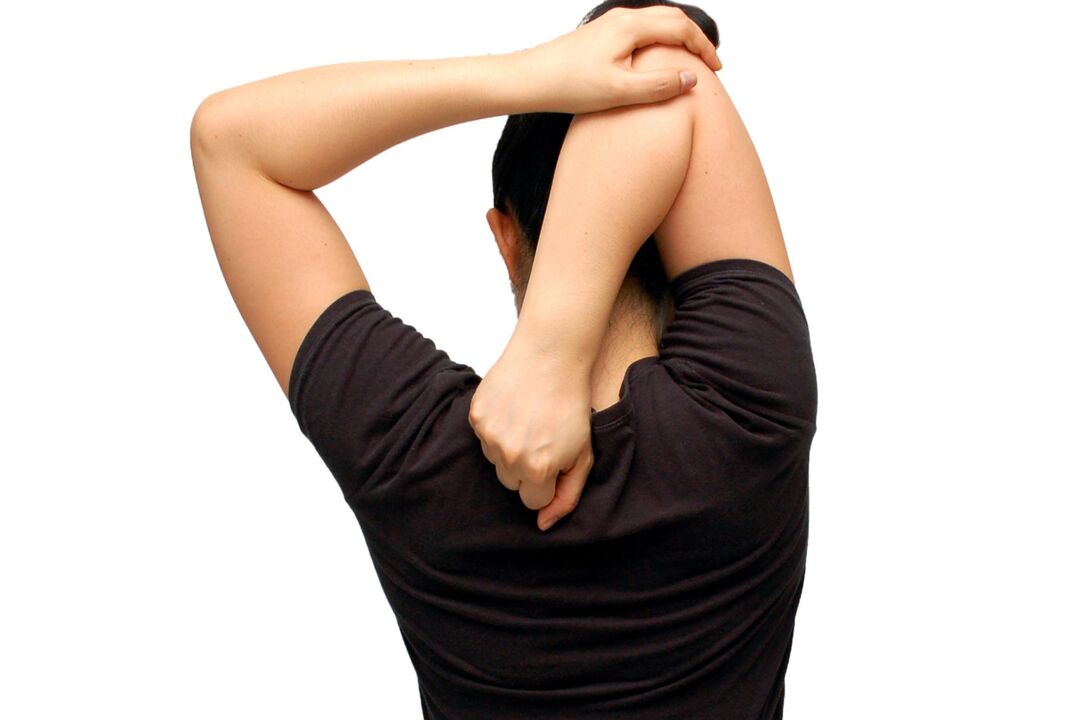
- We offer the simplest and most useful exercises for osteoarthritis of the shoulder joint:
- Sit in a chair and put your hands on your knees. Do circular movements with your shoulders: 5 times forward, then 5 times back.
- Raise your straightened arms, pull your shoulders and shoulder blades behind them as high as possible. Hold for a few seconds, then lower. Repeat 5-7 times.
- Straight arms lowered in the palm of the hand are separated from each other. Bend your wrists at the wrists, fingers should point upwards. Do circular movements with your shoulders: 5 times forward, then 5 times back.
- Raise your folded arms above your head, and the fingers of one should be on the elbows of the opposite hand. Gently pull your hands back until you feel a stretch in the shoulder joint. Perform the exercise 5-7 times.
- Join the palms of both hands behind the head so that the backs of the hands are facing down. Move your arms so that your palms fall from behind to the area between the shoulder blades. Repeat the exercise 5-7 times.
- Place the left hand on the right elbow, moving the right hand over the left shoulder as much as possible until you feel a stretch in the shoulder joint. Do the exercise 5-7 times. Swap hands and repeat the exercise for the other hand.
The following are effective in the treatment of osteoarthritis of the shoulder joint: manual therapy, physiotherapy and spa treatment. The use of traditional medicine is also considered justified.
Folk remedies and help at home
The main folk remedy for the treatment of osteoarthritis of the shoulder joint is an herbal medicine that allows you to use dried herbs and herbal decoctions for compresses, prepare ointments and rub at home to reduce pain, normalize metabolism and restore joint nutrition. .
- Ointment. Take 10 grams of dry hop leaves, sweet clover, St. John's wort. Finely chop the herbs and chop together, add Vaseline and mix all ingredients well. Apply the finished ointment to the shoulder area. This will help reduce pain and inflammation in the joint.
- friction. Pour five parts vodka or alcohol with one part of crushed marsh rosemary flowers. Then you need to insist on the drug in a warm dark place for 24 hours. Tincture is used externally to rub the affected joints.
- decoction. Corn stigmas (2 tablespoons) pour two cups of water, boil for 10 minutes, strain and take a tablespoon four times a day.
- Compress. To compress, you need to infuse 30 grams of dry oatmeal in two glasses of water. Apply the prepared mass on the painful shoulder for 30 minutes.
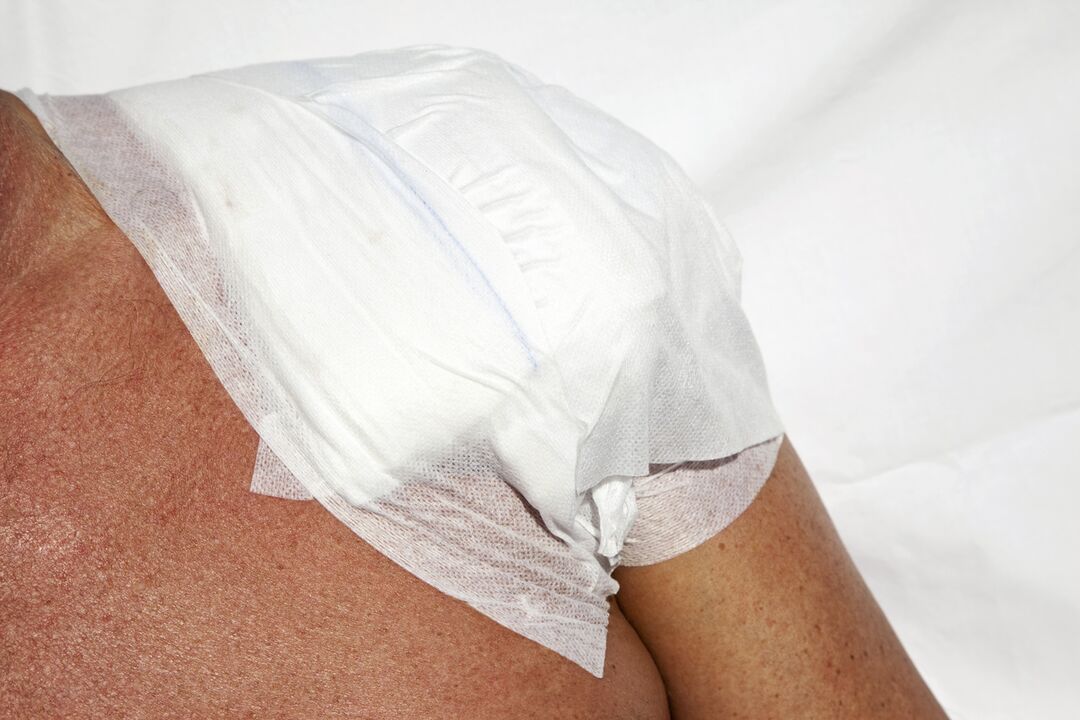
Alternative treatment of shoulder osteoarthritis
- Manual methods - massage, manual therapy sessions, osteopathy - allow you to relieve muscle blocks, tension and spasms, release blood vessels and nerves leading to the joint.
- Physiotherapy, especially shock wave therapy, balneotherapy, mud therapy and other methods are not recommended during exacerbation, ie when there is an active inflammatory process in the joint.
- Remission is an excellent reason for a course of spa treatment, after which there is continuous improvement.
Surgical treatment of shoulder osteoarthritis
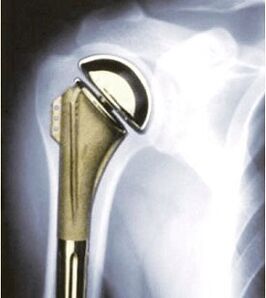
With an overt pain syndrome that prevents the patient from leading a normal life, the doctor may recommend surgery.
Prostheses are often performed, ie the destroyed joint is replaced with an endoprosthesis. If possible, partial arthroplasty is performed, replacing only part of the shoulder joint.
Rarely, surgery is required because any surgical intervention, especially associated with the installation of an intraarticular prosthesis, can lead to complications and a long recovery period.
Osteoarthritis of the shoulder joint is an insidious and dangerous disease in which a person's motor function is impaired and a fairly severe pain syndrome is noted.
It is important to treat this disease in time at the first minor symptoms, to prevent further destruction of the joint.
The patient must remember that the successful treatment of osteoarthritis depends not on drugs, but on his efforts and activities.












































